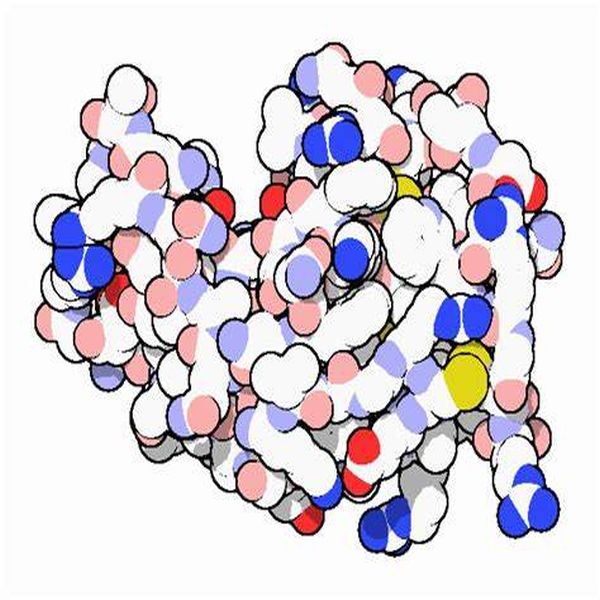Lysozyme (LZM), N-acetyl cell wall aminoglycan hydrolase, an alkaline protease that hydrolyzes cell wall peptidoglycan and can dissolve some bacteria. Composed of 129 amino acid residues, there are 4 pairs of interchain disulfide bonds to form a stable molecular configuration. Contains a variety of amino acids, especially a large amount of arginine, lysine and leucine. It is present in saliva, tears, sweat, milk, intestinal secretions, egg whites, and organ tissue fluids, and is also abundant in lysosomes of phagocytes. It can break the 1,4-β-glucosidic bond between acetylglucosamine and acetylmuramic acid in the peptidoglycan of the cell wall of Gram-positive bacteria, so that many voids are formed in the cell wall, resulting in the death of the lysed. Gram-negative bacteria have a layer of lipopolysaccharide and lipoprotein on the outside of the cell wall peptidoglycan, so they are not easily affected by lysozyme. But lysozyme can promote and assist the antibody-complement bacteriolysis, thereby enhancing its bactericidal effect. The lysosome of phagocytic cells is rich in lysozyme, which is a powerful weapon when phagocytic cells play phagocytosis. In addition, most coagulase-positive and several coagulase-negative Staphylococcus aureus also produce an extracellular enzyme similar to lysozyme, called endo-β-N-acetylglucosaminidase (EC3.4.99. 17), which can hydrolyze the glucosyl- (1 → 4) -β-bond in the peptidoglycan molecule.
Application in medicine: Mainly used in various mucosal inflammations of the facial department such as paranasal sinusitis, chronic rhinitis, acute and chronic pharyngitis, lichen planus, oral ulcers, exudative otitis media, and dermatology such as herpes zoster Warts, chickenpox, etc. are also used for asthmatic tracheitis, ulcerative colitis, mumps, etc. This product is better when used with antibacterial drugs.
Application in biotechnology: Lysozyme has the function of destroying the cell wall structure of bacteria. Treating G + bacteria with lysozyme can obtain protoplasts after destroying the cell wall, so it is widely used in biotechnology and becomes a must for cell fusion operations in genetic engineering and cell engineering Indispensable tool enzyme.
Application in aquatic products and meat products: Aiming at the non-toxic and harmless characteristics of lysozyme, and at the same time decomposing G + cell wall, it is used in aquatic products and meat products to ensure that the original nutrients of food are not lost Under the premise of, it can play a role in the preservation and preservation of aquatic products and meat products; the combined application of lysozyme bacterial enzymes with sodium chloride and nitrite can extend the shelf life of meat products, and its preservation effect is better than that when used alone Better; use 0.05% lysozyme in combination with phytic acid polyphosphate, glycine, etc. as a preservative and preservative to extend the shelf life of seafood and aquatic products.
Application in other foods: Cream cake is one of the foods that are prone to spoilage. Adding lysozyme to the cake can prevent spoilage caused by microorganisms; applying lysozyme to the preservation of food, its effect is also very obvious. At the same time, according to the non-toxic, harmless and health care effect of lysozyme, it has the effects of anti-infection and enhancement of antibiotics, as well as the promotion of blood coagulation and hemostasis and tissue regeneration. Now some people are trying to use food as an additive to enhance the health care effect of food.
Post time: May-27-2020
